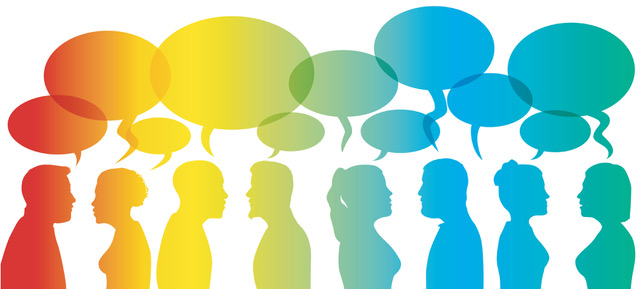By Judith E. Glaser | innovationexcellence.com
Published: September 16, 2013

Sponsored by the Creating WE Institute
I have two questions for our readers for which I do not have the answer. First: How satisfied are you with the overall quality of conversations you have? Second: What can you do to make your conversations more productive? And a third bonus question – does this sound at all familiar:
- 9 out of 10 conversations miss the mark
- We talk past each other
- We talk over each other
- We trigger each other
- Then we stop listening
Why? The answer may be shown in this encounter: as I worked in my back yard yesterday, a garden snake slithered out beneath my feet. In principle, I like snakes, but in less than a nanosecond, my nervous system leapt into the air, and ran screaming, bringing me with it. That snake wasn’t trying to trigger me, but he (or she) did. I don’t know about you, but conversations often take on that quality of nerve-ending, gut tweaking SURPRISE. As for conversations that truly matter? I think I’ve found an alternative response to the work-world version of snakes slithering in the grass and triggering the #$*!$# out of us.
 We are excited about bringing Conversational Intelligence, Judith’s newest book, and culminating body of decades of work in the C-Suite and research labs, to the world. While its lessons are universal, we are especially pleased to share it with innovation practitioners – it’s our newest addition to our Books as Tools family of killer books – a small yet growing body of work we believe has the catalytic ability to be used for good, not just read. To join Judith in a live conversation on Sept. 26th, register here.
We are excited about bringing Conversational Intelligence, Judith’s newest book, and culminating body of decades of work in the C-Suite and research labs, to the world. While its lessons are universal, we are especially pleased to share it with innovation practitioners – it’s our newest addition to our Books as Tools family of killer books – a small yet growing body of work we believe has the catalytic ability to be used for good, not just read. To join Judith in a live conversation on Sept. 26th, register here.
Because, we know that innovation is one part imagination, and two parts enrolling; that collaboration, innovation’s most profound verb and the key to creating new stuff, is one part getting the right people in the room or online, and much more about creating an environment where ideas can really be heard and built upon, or said another way, developed in a climate of trust, where it’s less about being right, and more about producing the best results.
Because we know, that actually launching something new in the world or transforming anything, is by definition, an exercise in mind-shifts, and that those are usually, naturally because we’re human and hard-wired, accompanied by fear and frustration, balanced only by commitment and need.
Remember when Emotional Intelligence (EQ) popped into our collective consciousness? It took Daniel Goleman drawing that distinction to confirm for us what we already, intuitively and it turns out, emotionally, knew: that we make decisions instantaneously first emotionally, then rationally. That we read people and situations, develop trust, make life-altering decisions like where to work and live, whom to love, using a form of native intelligence we only knew tacitly, silently. That might have been OK, unless we wanted to summon our EQ and apply it at will to solve problems.
Here comes Judith E. Glaser, her lifetime research and her offer to be our guide in the adventure called developing Conversational Intelligence. Depending on the day, you can either view it as an owner’s manual for building trust, or perhaps, the best therapy you can get on Amazon.
So What Exactly Is Conversational Intelligence?
It is a deeper understanding that conversations are not only the exchange of information.
- They are multi-dimensional experiences…
- They have:
– Space
– Time
– Dimensions
– Influence Ripples
– Conversations keep us connected with others and enable us to successfully navigate our ‘inner and outer’ realities together.
- Conversations activate our next generation DNA
DeMille on Glaser
“The crux of Conversational Intelligence is knowing that the words we use, and how we use them, have a direct impact on the brain neurochemistry of the people who hear what we say. This is real power, and those who understand the incredible influence of words are able to use them more effectively to lead, sway, and impact other people.”
Are there Cliff Notes?
- There are always Cliff Notes. These take the form of LAPS, and here they are:
L – Listen to Connect, Not Reject
A – Ask More Questions For Which You Have No Answers
P – Prime Conversations for Mutual Success
S – Sustained Conversational Agility; And we need to approach this as a long-distance sport in which we take multiple laps
How Will Conversational Intelligence Help You?
Understanding how using different words and communication styles impact the brain chemistry, aka, the hard-wiring and receptiveness of the people you work with, will help you build Conversational Agility, which Glaser describes as the ability to navigate at will, or toggle, between the three levels of Conversational Intelligence.
Conversational Agility is a secret power within your grasp. It enables you to toggle at will between the three innate levels:
Level I – Confirming What We Know, Asking & Telling
Level II – Defending What We Know, Advocating & Inquiring
Level III – Discovering What We Know, Sharing & Discovering
- See more at: http://www.innovationexcellence.com/blog/2013/09/16/why-we-need-conversational-intelligence/#sthash.LtyB25IP.dpuf








